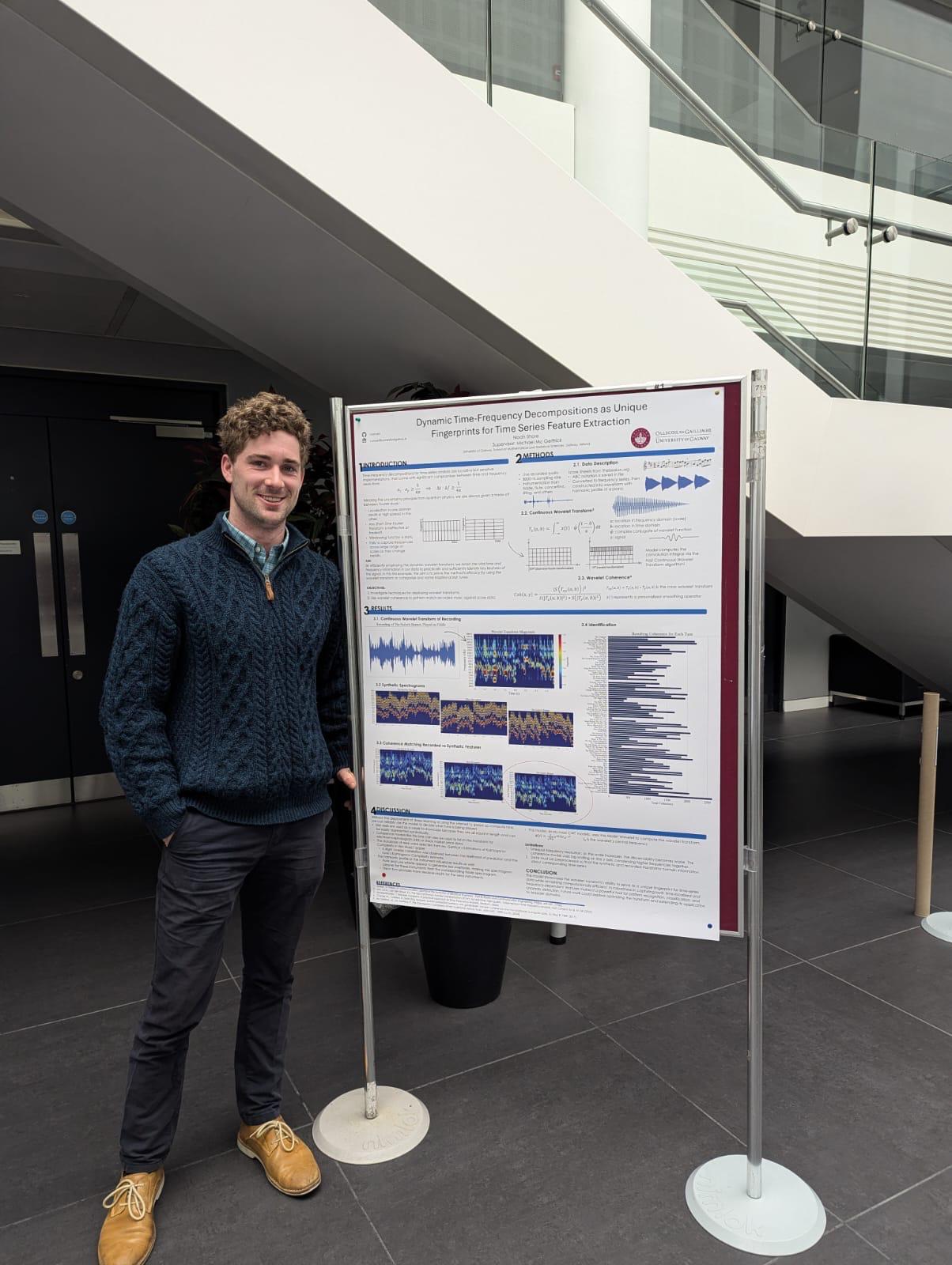Noah Shore
Professional Summary
Mathematician and computational scientist with a focus in quantitative analysis, full-stack development, and DevOps workflows. Experienced in building end-to-end data-driven applications—from mathematical modeling visualization to deployment via cloud-native tools. Research background in time-frequency analysis, signal processing, and nonlinear dynamic systems, with practical applications in finance, engineering, and music theory.
Education
- M.S. Mathematics University of Galway, 2025
Research: Dynamic Frequency Decomposition, Wavelet Coherence, Time-Series Signatures
Community: Award winning speaker at College of Science and Engineering and School of Mathematical and Statistical Sciences Research and Innovation Days
Special Interest: Optimization, Patterns in Irish Music - B.S. Mathematics University of North Carolina at Chapel Hill, 2022
Honors Research: Computational Fluid Dynamics – Implemented solvers for Navier-Stokes equations
Relevant Coursework: Machine Learning, Optimization, Numerical Methods, Differential Equations
Work Experience
Computational Modeler NextPower 360, Jan 2023 – Aug 2024
- Modeled electromagnetic properties of wind generators using COMSOL AC/DC modules.
- Conducted Finite Element Analysis to numerically solve Maxwell's Equations and optimize generator designs.
- Assisted in prototype development and R&D innovation.
Machine Learning Instructor ID Tech Academy, May 2022 – Nov 2022
- Designed and led custom ML & Python courses for students (ages 14–20).
- Taught Neural Networks, Regression Models, Data Wrangling using PyTorch, Pandas, and Scikit-Learn.
- Created personalized lesson plans for hands-on learning.
Technical Skills
- Programming: Python/PyTorch, Julia, R, MATLAB, Mathematica, SQL, HTML/CSS
- Machine Learning: Neural Networks, Optimization, Novel Feature Extraction, Lempel-Ziv Compression
- Computational Modeling: FEA, Navier-Stokes Solvers, Time-Frequency Analysis, Maxwell's Equations
- DevOps & Deployment: Docker, GitHub Actions, Azure Container Registry, Azure Web Apps
- Software Tools: Git, ANSYS Maxwell, AWS Cloud, COMSOL
Projects
Master’s Thesis GitHub Link
- Developing time-frequency decomposition methods for analyzing raw recordings of Irish tunes and exploring feature extraction techniques to identify tunes without traditional deep learning models.
- Expanded use cases for model to generalized time-series signatures by wavelet transform for applications in economic forecasting and electroencephalography cross spectra output.
Coherix Live Market Analysis Live App
- Building a dashboard for signal spectral decomposition using wavelet coherence across incoming data.
- Designed a novel backend to perform expensive computations that allow for streaming results in real-time.
- Outperforms existing coherence implementations by many orders of scale.
- Containerized application with Docker and deployed to Azure using container registry and web app portal.
Deep Learning for Image Recognition GitHub Link
- Trained multiple image classification models on the MNIST dataset.
- Implemented Multilayer Perceptron, Random Forest, Logistic Regression, and SVM.
- Used to formulate lesson plans for machine learning students.
Activities
- NCAA Track & Field – Competed for UNC in ACC Championships
- Competitive Sailing – Crewman for UNC & University of Galway Sailing Teams
- Musician – Fiddler with TRADSOC (University of Galway) and Carolina Bluegrass Band (UNC Chapel Hill)
- Maths and Music Research Group - University of Galway Comp-Sci and Math Departments
